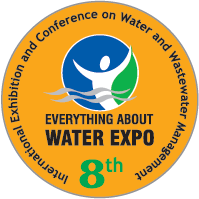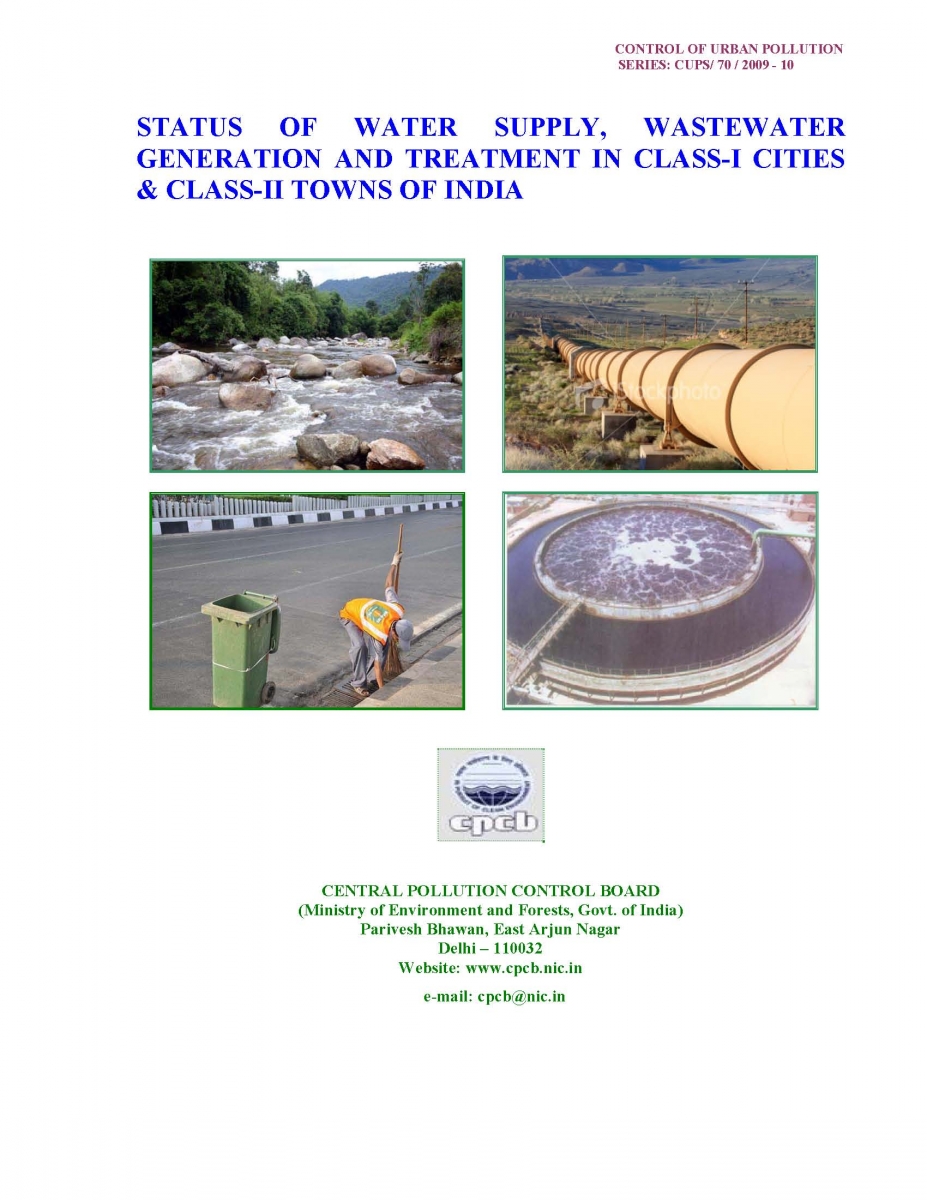/topics/wastewater
Wastewater
Water Footprint Manual: State of the art - A method of water footprint assessment by the Water Footprint Network (November 2009)
Posted on 11 Apr, 2010 07:37 PM The Water Footprint Manual (2009) by the Water Footprint Network (WFN) is a comprehensive and up-to-date outline of the method of water footprint assessment. It introduces how water footprints can be calculated for individual processes and products, as well as for consumers, nations and businesses.
The Water Footprint Manual (2009) by the Water Footprint Network (WFN) is a comprehensive and up-to-date outline of the method of water footprint assessment. It introduces how water footprints can be calculated for individual processes and products, as well as for consumers, nations and businesses.
The concept is introduced as a comprehensive indicator of freshwater resources appropriation, as against the traditional and restricted measure of water withdrawal. The hidden water use behind products are measured over the full supply chain and water consumption volumes are measured by source and polluted volumes by type of pollution. All components of a total water footprint are specified geographically and temporally. Blue water (surface and groundwater), green water (rainwater stored in the soil as soil moisture) and grey water (polluted water) footprints are defined and are included along with the indirect water use in measuring the overall water footprints.
An ecological framework for water management in a domestic context - A spreadsheet-based toolkit by Biome
Posted on 08 Apr, 2010 10:43 PMBased on user-entered data on domestic water demand, waste water discharge, rainfall availability and recharge, extent of reuse of treated waste water, this spreadsheet-based toolkit developed by Biome Solutions allows you to juggle around with the relevant data fields, and figure out various ways in which you can bring down your overall groundwater draft (and hence ecological footprint) as low as possible, and gives a snapshot result of your overall household-level water input and output situation.
8th Everything About Water Expo 2011, EA Water, Mumbai
Posted on 26 Mar, 2010 11:24 AM
Organizer: EA Water Private Limited
Topic: International Exhibition & Conference on Water & Wastewater Management
Venues:
- Exhibition: Bombay Exhibition Centre, Goregaon (E), Mumbai
- Conference: Hotel InterContinental The Lalit, Andheri, Mumbai
Description:
The show is South Asia’s largest and the only show in the country organised by water experts. With more than 350 exhibitors, over 18,000 trade visitors and 900 conference delegates from across the globe, the EA Water Expo shall redefine water shows in India.
Status of water supply and wastewater generation and treatment in Class-I cities and Class-II towns of India - A report by CPCB (2009)
Posted on 23 Mar, 2010 03:34 AM This is the fourth in a decadal series of reports published by the Central Pollution Control Board (CPCB), previous ones published in 1978-79, 1989-90 and 2000, which provides basic information about the status of water supply and sewage generation and treatment of 498 Class-I cities and 410 Class-II towns, along with information on 53 coastal Class-I cities and 35 coastal Class-I towns, besides Ganga Basin as a separate subsection.
This is the fourth in a decadal series of reports published by the Central Pollution Control Board (CPCB), previous ones published in 1978-79, 1989-90 and 2000, which provides basic information about the status of water supply and sewage generation and treatment of 498 Class-I cities and 410 Class-II towns, along with information on 53 coastal Class-I cities and 35 coastal Class-I towns, besides Ganga Basin as a separate subsection.
Design experts training on Community Based Sanitation (CBS), CDD, Bangalore
Posted on 22 Feb, 2010 06:24 PM
Organizer: Consortium for DEWATS Dissemination (CDD)
Venue: Bangalore
Description:
The Consortium for DEWATS Dissemination (CDD) Society is a not-for-profit organisation working in the field of decentralised basic need services across India. Decentralised solutions for wastewater treatment, water and energy supply, solid waste management and urban sanitation planning are successfully promoted over the last ten years.
Training on Citywide Sanitation Planning by Consortium for DEWATS Dissemination Society, Bangalore
Posted on 22 Feb, 2010 06:22 PM Organizer: Consortium for DEWATS Dissemination(CDD) Society
Organizer: Consortium for DEWATS Dissemination(CDD) Society
DEWATS concept engineer's training, CDD, Bangalore
Posted on 22 Feb, 2010 06:16 PMThe Consortium for DEWATS Dissemination (CDD) Society is a not-for-profit organisation working in the field of decentralised basic need services across India. Decentralised solutions for wastewater treatment, water and energy supply, solid waste management and urban sanitation planning are successfully promoted over the last ten years.
DEWATS Mason's Training, CDD, Bangalore
Posted on 22 Feb, 2010 06:12 PMThe Consortium for DEWATS Dissemination (CDD) Society is a not-for-profit organisation working in the field of decentralised basic need services across India. Decentralised solutions for wastewater treatment, water and energy supply, solid waste management and urban sanitation planning are successfully promoted over the last ten years.
DEWATS Site Supervisor's Training, CDD, Bangalore
Posted on 22 Feb, 2010 06:10 PMThe Consortium for DEWATS Dissemination (CDD) Society is a not-for-profit organisation working in the field of decentralised basic need services across India. Decentralised solutions for wastewater treatment, water and energy supply, solid waste management and urban sanitation planning are successfully promoted over the last ten years.





